General storage rules
Spices do not tolerate sudden changes in humidity and air temperature, so they should be kept away from radiators, stoves and sinks. Do not sprinkle seasonings directly from a jar or bag during cooking: steam from a hot pot or frying pan spoils the product. It is recommended to use a knife, spoon, or just clean fingers.
Whole seasonings last longer than chopped ones, so you should buy small amounts of ground spices.
In the box
The simplest and most affordable solution for storing spices in the kitchen is to use store bags. It is best to keep the condiments in one place using a neat box, food container, or wicker basket. To preserve the product after opening, it is necessary to wrap the edges of the package 2-3 times and fix them with a clothespin.
Idea for easier storage of spices: if you glue the name of the seasoning on the end of a stationery clip, the time to find the necessary bag will be reduced.
In pockets
Another way of storing spices in bags is with net pockets that look like a book. Convenient, since each package has its own separate place. To find the right seasoning, just look through the pockets. Such unusual fabric organizers can be ordered from an online store or sewn by hand.
In plastic containers
A good option for compact storage of spices in small quantities. Rectangular boxes made of transparent plastic fit easily into the closet and do not take up much space. Equipped with special caps with small dispensing holes.
A budget solution for those who do not like to throw away plastic packaging that can be used again. Convenient teak-tac boxes are ideal for storing chopped spices. The jars can be signed with a permanent marker or can be labeled.
In the rack
A great way to keep your seasoning collection in an aesthetically pleasing organizer. The counter will come in handy for those who often cook and want condiments to be readily available at all times. This is one of the most functional options for storing spices in the kitchen, as the jars are stacked vertically. The structure can be rotated, making it easier to access the desired container.
On hanging shelves
The traditional solution for small kitchens where every centimeter counts. The open storage system, located right on the wall, allows you to quickly use the seasoning you need. Spices can be stored in simple glass jars or you can buy containers of an unusual shape - the main thing is that the containers are hermetically sealed. But it should be borne in mind that spices should not be constantly exposed to sunlight.
On the shelves in the closet
This way of storing spices is of a closed type. Spices deteriorate more slowly inside the cupboard, as they are protected from the sun.To organize more convenient access to the jars, you should design special shelves that will allow you to arrange the seasonings more compactly. The photo shows a successful option, in which the place is filled as ergonomically as possible. Chalk signatures are made directly on the lids, painted with slate paint.
In a drawer
If the drawer does not have a built-in divider, you can find ready-made spice storage tools in the store. They can be made of wood or plastic. The spice jars are placed horizontally, which allows them to stay in place when opened. You can do without special accessories: for this you need to lay out the bottom of the box with an anti-slip coating, otherwise the spice jars will lie chaotically.
In some kitchen sets, the usable area is used to the maximum, resulting in narrow drawers. It is convenient to store spices in them, since the containers take up little space.
Under the closet
A solution that saves space and looks attractive in a Scandinavian or rustic kitchen. Under the cabinet or shelf, you can place both commercial organizers with magnets and ordinary jars with a screw cap. The second storage option can be easily done on your own. To fix the lid, you need to punch a hole in it with a nail, and then screw it to the shelf with a self-tapping screw.
On the door
The doors of hanging cabinets or floor cabinets are often empty, but with the help of special devices, additional storage space for spices can be organized on them. Shelves are plastic in the form of rings, wood and metal. The used inner door saves a lot of space in the kitchen.
On hooks
Another unusual idea to store spices in the kitchen: to implement it, you need small hooks and jars with a special lock. Hooks must be screwed to a wall cabinet or shelf by hooking a metal loop on the lid to them.
To store fragrant spices in hanging canvas bags, soak the cloth in a concentrated salt solution. Dried bags with tight ties will keep the seasoning for several weeks.
In magnetic containers
An original and practical idea for storing spices. Magnetic cans can be placed on a refrigerator or a metal board, which is included with the purchase of the structure. This is a great way to replace traditional travel magnets with more practical décor. In addition, you can create a special board by painting it with magnetic paint and turn a set of spices into a real art object.
In test tubes
A solution for those who value novelty and originality. Glass vials with spices, placed in a decorative wooden stand, look great in any interior. Instead of a storage stand, you can use a narrow shelf bolted to the wall. Adding spices from a test tube while cooking makes it easy to feel like an alchemist or a wizard.
In a pull-out shelf
A special box for spices can be made to order or bought in the store. It can be placed under the cabinet, thereby turning it into a secret place for storing spices, or you can purchase a free-standing model. Made from the same material as the kitchen furniture, the shelf will look harmonious and neat.
On rails
Another life hack to save space in the kitchen is to use a roof rack, which is suitable not only for storing cutlery and towels, but also for seasonings. To keep the spices in plain sight, you need jars with hook lids or hanging shelves.
There are many ways to place spices in the kitchen: some of them are only practical, and some can give the kitchen an extraordinary look and attract the attention of guests. It all depends on the owner of the house: a person who loves to cook will approach the storage organization both with benefit and taste.

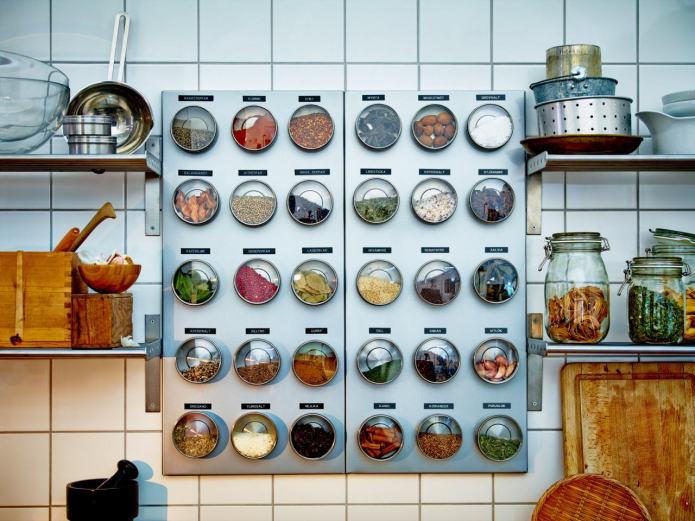
 10 practical tips for arranging a small kitchen in the country
10 practical tips for arranging a small kitchen in the country
 12 simple ideas for a small garden that will make it visually spacious
12 simple ideas for a small garden that will make it visually spacious
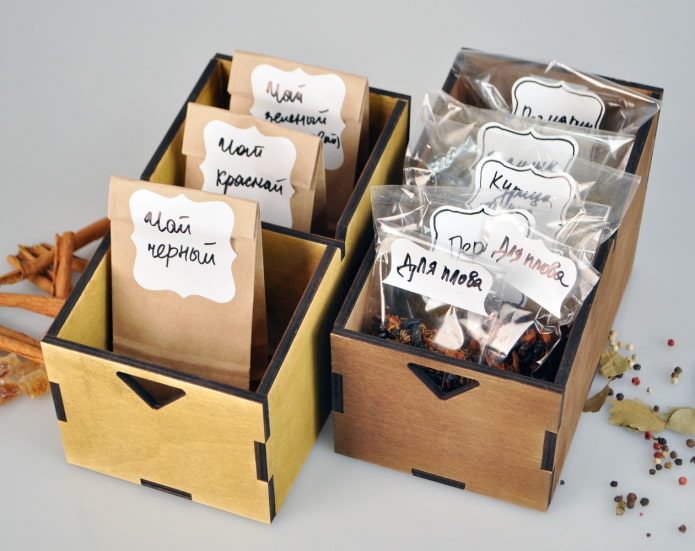

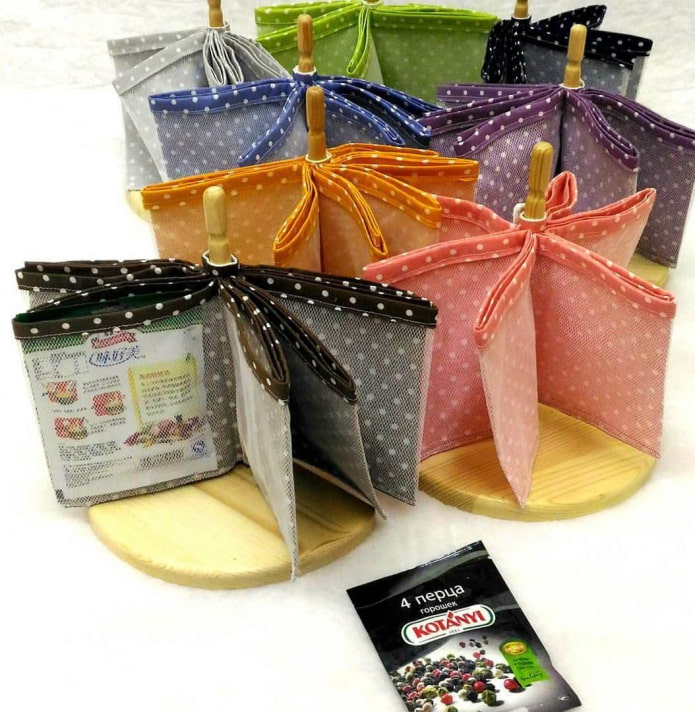
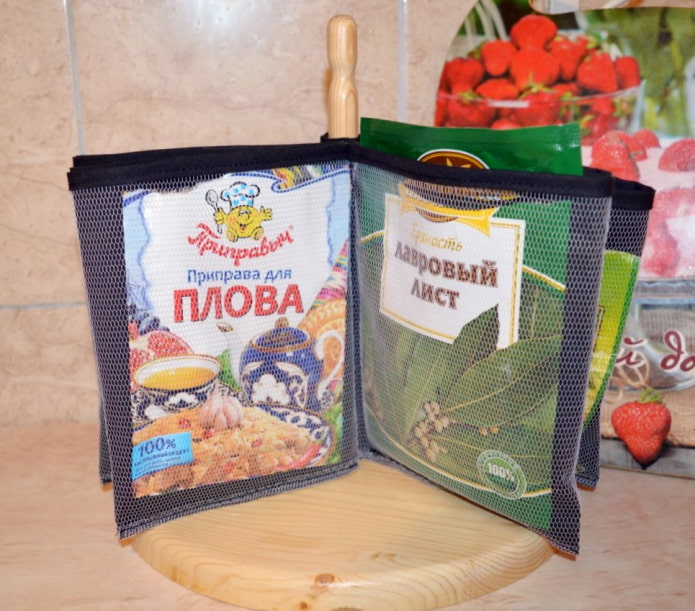
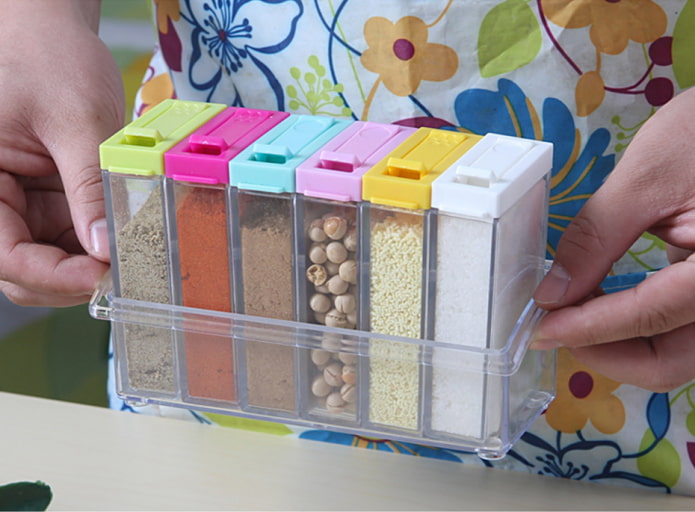

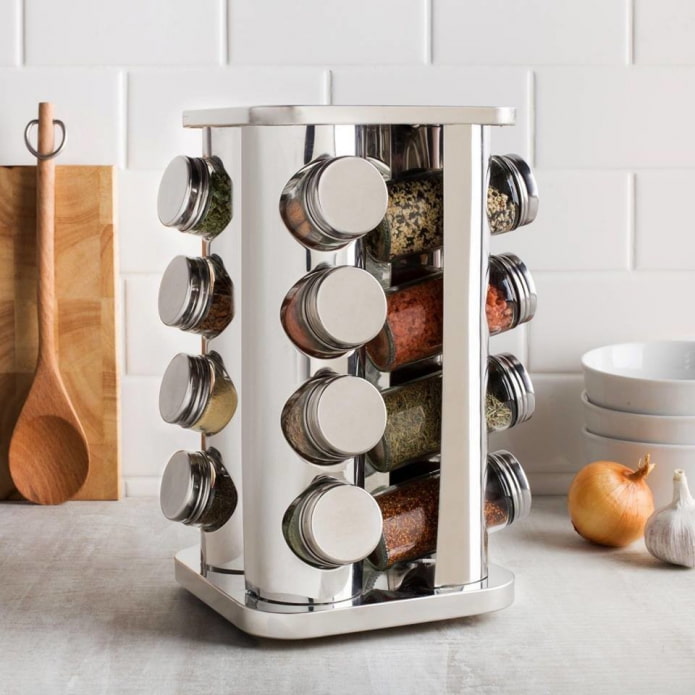
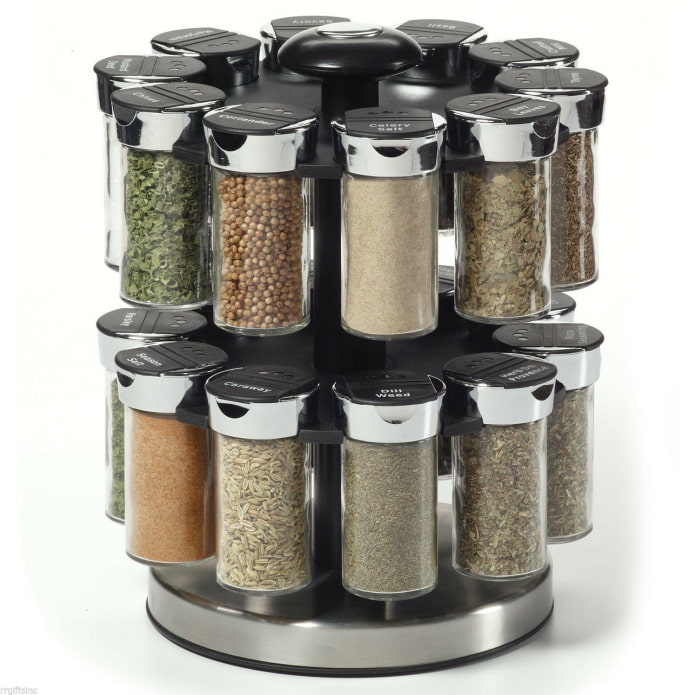
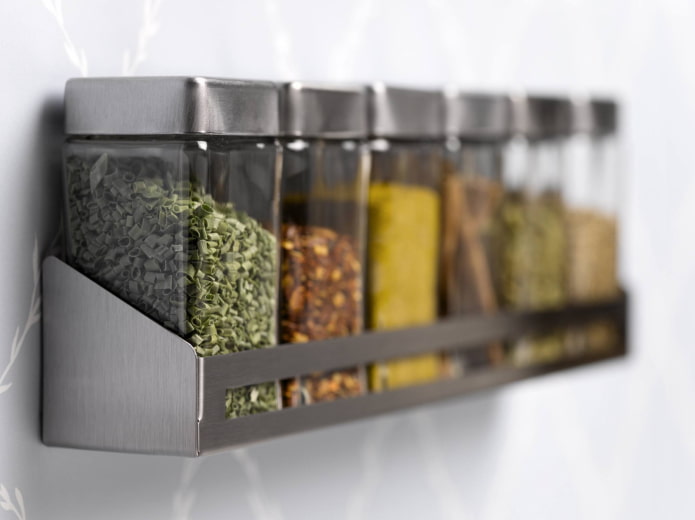
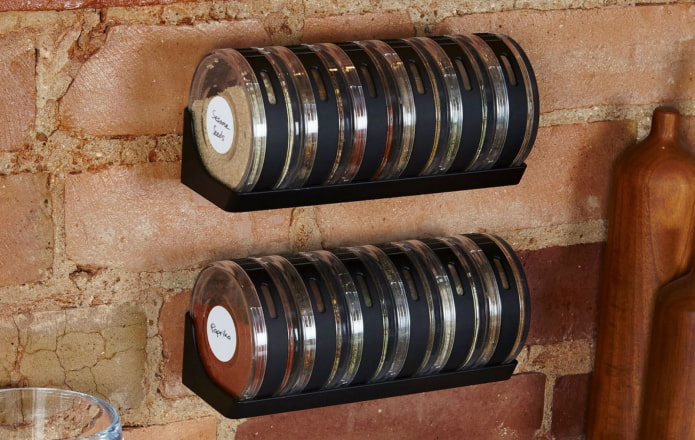
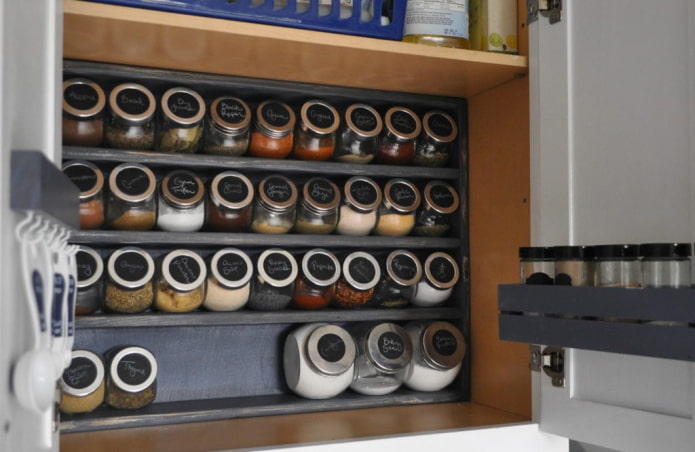

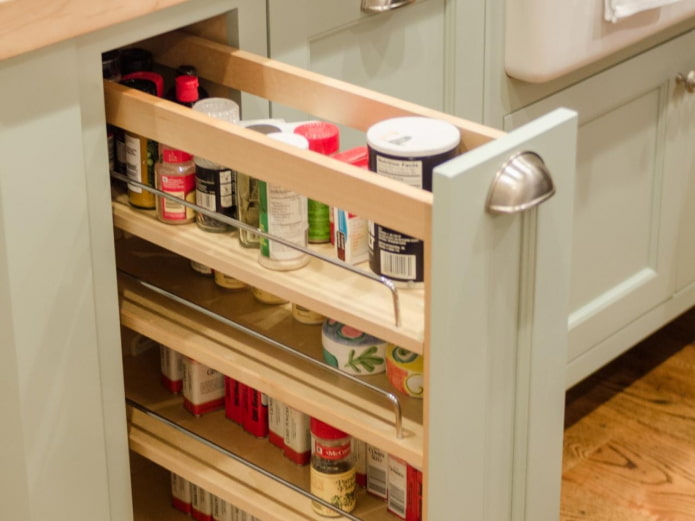
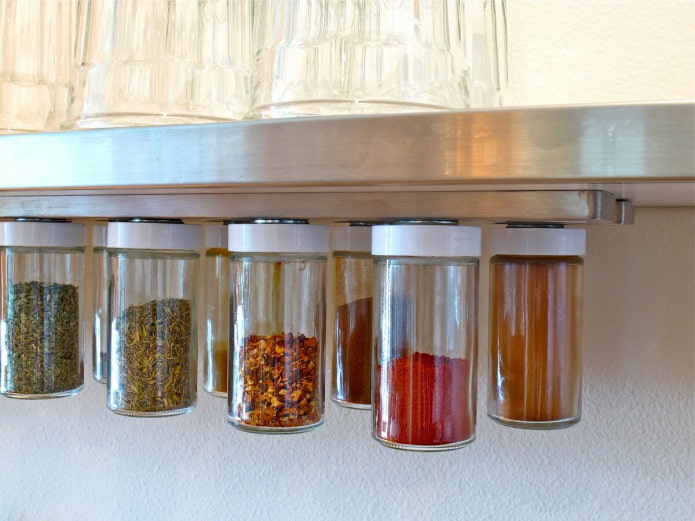
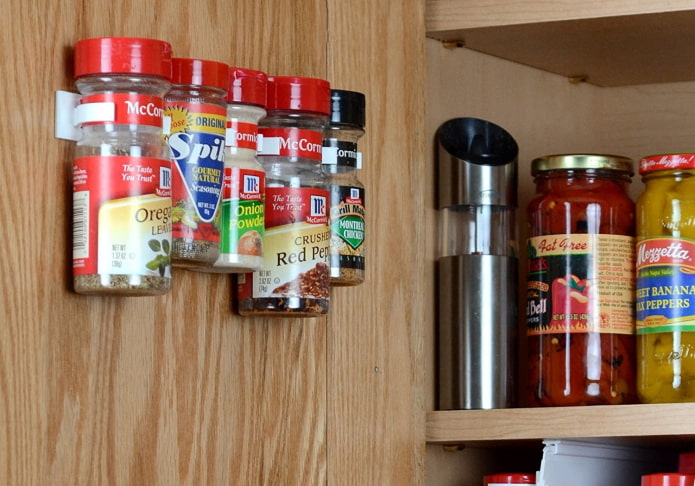
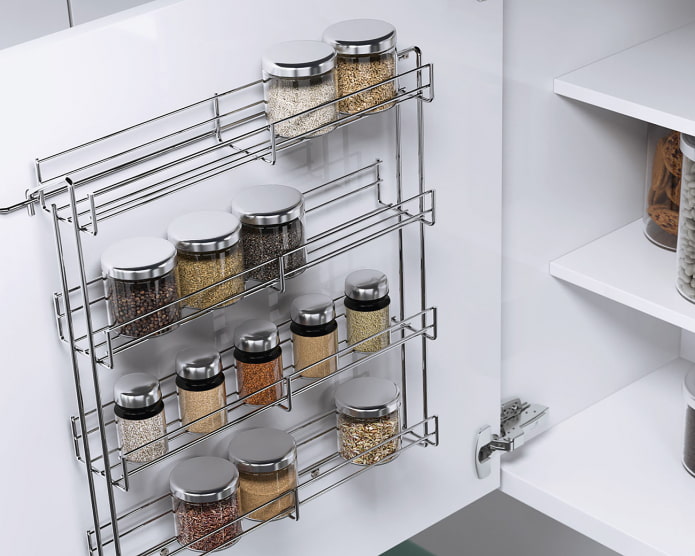
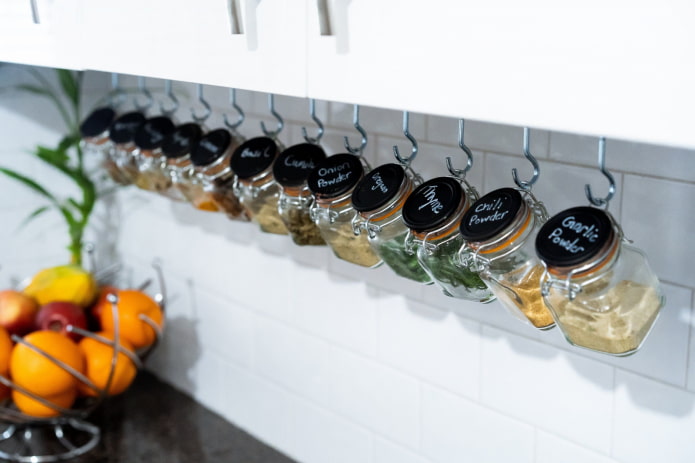


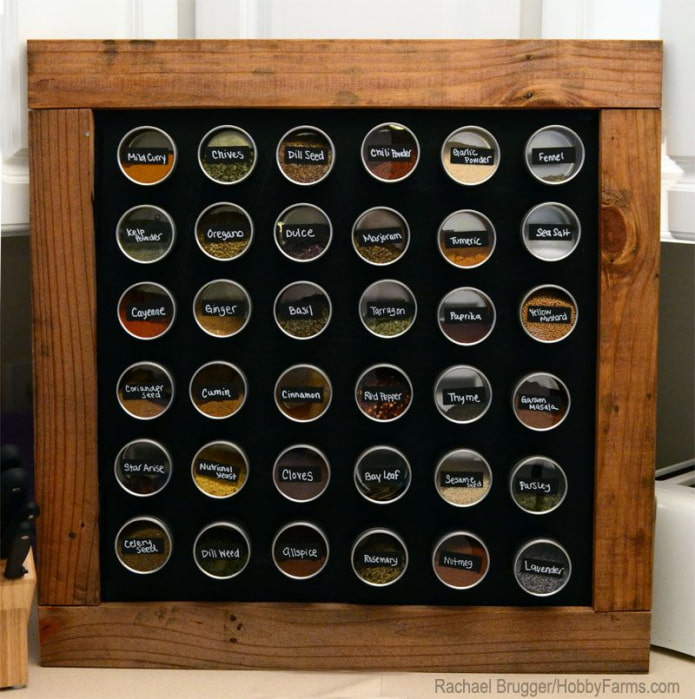

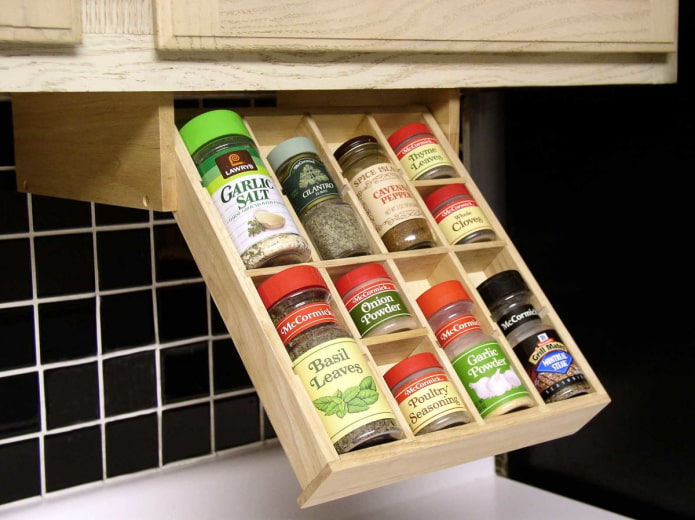
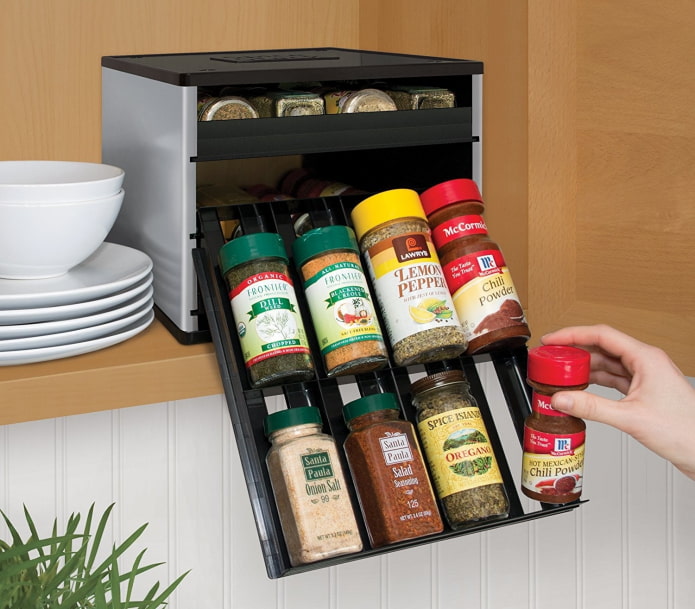


 How to choose the color of your kitchen sink?
How to choose the color of your kitchen sink? White kitchen set: features of choice, combination, 70 photos in the interior
White kitchen set: features of choice, combination, 70 photos in the interior Black set in the interior in the kitchen: design, choice of wallpaper, 90 photos
Black set in the interior in the kitchen: design, choice of wallpaper, 90 photos How to choose curtains for the kitchen and not regret it? - we understand all the nuances
How to choose curtains for the kitchen and not regret it? - we understand all the nuances Design of a white kitchen with a black countertop: 80 best ideas, photos in the interior
Design of a white kitchen with a black countertop: 80 best ideas, photos in the interior Kitchen design with green wallpaper: 55 modern photos in the interior
Kitchen design with green wallpaper: 55 modern photos in the interior